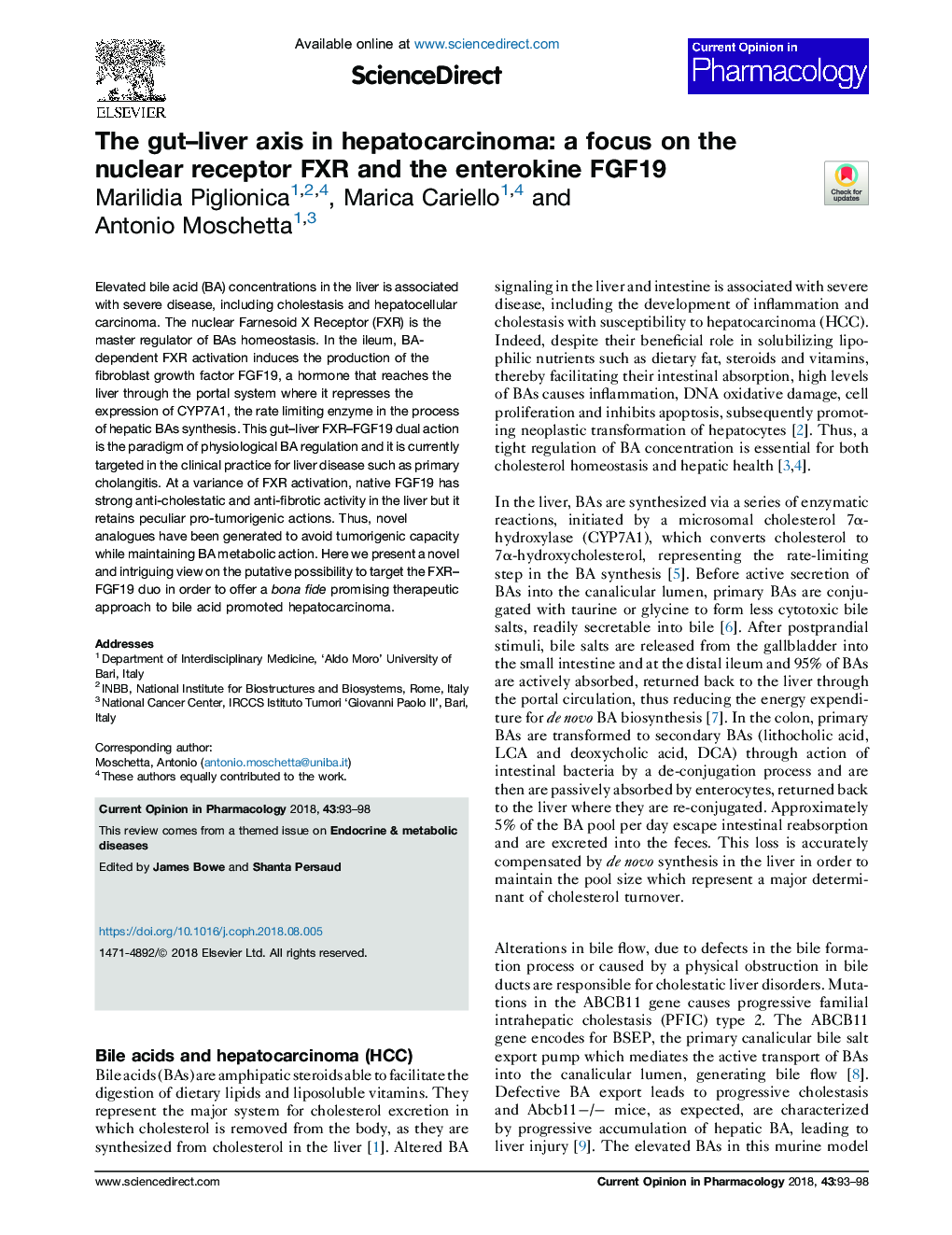| Article ID | Journal | Published Year | Pages | File Type |
|---|---|---|---|---|
| 9954881 | Current Opinion in Pharmacology | 2018 | 6 Pages |
Abstract
Elevated bile acid (BA) concentrations in the liver is associated with severe disease, including cholestasis and hepatocellular carcinoma. The nuclear Farnesoid X Receptor (FXR) is the master regulator of BAs homeostasis. In the ileum, BA-dependent FXR activation induces the production of the fibroblast growth factor FGF19, a hormone that reaches the liver through the portal system where it represses the expression of CYP7A1, the rate limiting enzyme in the process of hepatic BAs synthesis. This gut-liver FXR-FGF19 dual action is the paradigm of physiological BA regulation and it is currently targeted in the clinical practice for liver disease such as primary cholangitis. At a variance of FXR activation, native FGF19 has strong anti-cholestatic and anti-fibrotic activity in the liver but it retains peculiar pro-tumorigenic actions. Thus, novel analogues have been generated to avoid tumorigenic capacity while maintaining BA metabolic action. Here we present a novel and intriguing view on the putative possibility to target the FXR-FGF19 duo in order to offer a bona fide promising therapeutic approach to bile acid promoted hepatocarcinoma.
Related Topics
Life Sciences
Neuroscience
Cellular and Molecular Neuroscience
Authors
Marilidia Piglionica, Marica Cariello, Antonio Moschetta,
